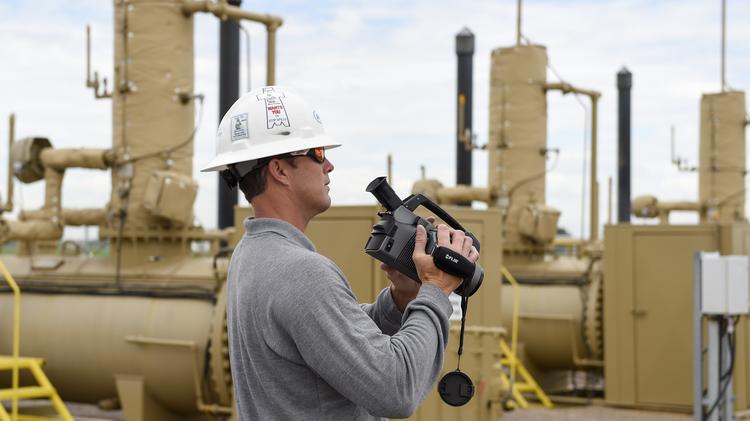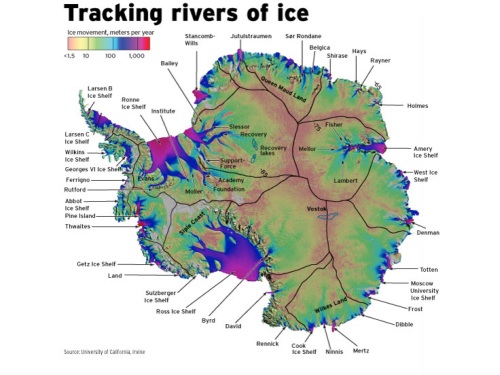Palestine National Council
PLO
Charter
Also known as "the Palestinian
National Charter" or "the Palestinian Convenant".
Article 1: Palestine is the homeland of the Arab Palestinian
people; it is an indivisible part of the Arab homeland, and
the Palestinian people are an integral part of the Arab
nation.
Article 2: Palestine, with the boundaries it had during the
British Mandate, is an indivisible territorial unit.
Article 3: The Palestinian Arab people possess the legal right to
their homeland and have the right to determine their destiny
after achieving the liberation of their country in accordance
with their wishes and entirely of their own accord and will.
Article 4: The Palestinian identity is a genuine, essential, and
inherent characteristic; it is transmitted from parents to
children. The Zionist occupation and the dispersal of the
Palestinian Arab people, through the disasters which befell
them, do not make them lose their Palestinian identity and
their membership in the Palestinian community, nor do they
negate them.
Article 5: The Palestinians are those Arab nationals who, until
1947, normally resided in Palestine regardless of whether they
were evicted from it or have stayed there. Anyone born, after
that date, of a Palestinian father - whether inside Palestine
or outside it - is also a Palestinian.
Article 6: The Jews who had normally resided in Palestine until
the beginning of the Zionist invasion will be considered
Palestinians.
Article 7: That there is a Palestinian community and that it has
material, spiritual, and historical connection with Palestine
are indisputable facts. It is a national duty to bring up
individual Palestinians in an Arab revolutionary manner. All
means of information and education must be adopted in order to
acquaint the Palestinian with his country in the most profound
manner, both spiritual and material, that is possible. He must
be prepared for the armed struggle and ready to sacrifice his
wealth and his life in order to win back his homeland and
bring about its liberation.
Article 8: The phase in their history, through which the
Palestinian people are now living, is that of national
(watani) struggle for the liberation of Palestine. Thus the
conflicts among the Palestinian national forces are secondary,
and should be ended for the sake of the basic conflict that
exists between the forces of Zionism and of imperialism on the
one hand, and the Palestinian Arab people on the other. On
this basis the Palestinian masses, regardless of whether they
are residing in the national homeland or in diaspora (mahajir)
constitute - both their organizations and the individuals -
one national front working for the retrieval of Palestine and
its liberation through armed struggle.
Article 9: Armed struggle is the only way to liberate Palestine.
Thus it is the overall strategy, not merely a tactical phase.
The Palestinian Arab people assert their absolute
determination and firm resolution to continue their armed
struggle and to work for an armed popular revolution for the
liberation of their country and their return to it. They also
assert their right to normal life in Palestine and to exercise
their right to self-determination and sovereignty over it.
Article 10: Commando action constitutes the nucleus of the
Palestinian popular liberation war. This requires its
escalation, comprehensiveness, and the mobilization of all the
Palestinian popular and educational efforts and their
organization and involvement in the armed Palestinian
revolution. It also requires the achieving of unity for the
national (watani) struggle among the different groupings of
the Palestinian people, and between the Palestinian people and
the Arab masses, so as to secure the continuation of the
revolution, its escalation, and victory.
Article 11: The Palestinians will have three mottoes: national
(wataniyya) unity, national (qawmiyya) mobilization, and
liberation.
Article 12: The Palestinian people believe in Arab unity. In order
to contribute their share toward the attainment of that
objective, however, they must, at the present stage of their
struggle, safeguard their Palestinian identity and develop
their consciousness of that identity, and oppose any plan that
may dissolve or impair it.
Article 13: Arab unity and the liberation of Palestine are two
complementary objectives, the attainment of either of which
facilitates the attainment of the other. Thus, Arab unity
leads to the liberation of Palestine, the liberation of
Palestine leads to Arab unity; and work toward the realization
of one objective proceeds side by side with work toward the
realization of the other.
Article 14: The destiny of the Arab nation, and indeed Arab
existence itself, depend upon the destiny of the Palestine
cause. From this interdependence springs the Arab nation's
pursuit of, and striving for, the liberation of Palestine. The
people of Palestine play the role of the vanguard in the
realization of this sacred (qawmi) goal.
Article 15: The liberation of Palestine, from an Arab viewpoint,
is a national (qawmi) duty and it attempts to repel the
Zionist and imperialist aggression against the Arab homeland,
and aims at the elimination of Zionism in Palestine. Absolute
responsibility for this falls upon the Arab nation - peoples
and governments - with the Arab people of Palestine in the
vanguard. Accordingly, the Arab nation must mobilize all its
military, human, moral, and spiritual capabilities to
participate actively with the Palestinian people in the
liberation of Palestine. It must, particularly in the phase of
the armed Palestinian revolution, offer and furnish the
Palestinian people with all possible help, and material and
human support, and make available to them the means and
opportunities that will enable them to continue to carry out
their leading role in the armed revolution, until they
liberate their homeland.
Article 16: The liberation of Palestine, from a spiritual point of
view, will provide the Holy Land with an atmosphere of safety
and tranquility, which in turn will safeguard the country's
religious sanctuaries and guarantee freedom of worship and of
visit to all, without discrimination of race, color, language,
or religion. Accordingly, the people of Palestine look to all
spiritual forces in the world for support.
Article 17: The liberation of Palestine, from a human point of
view, will restore to the Palestinian individual his dignity,
pride, and freedom. Accordingly the Palestinian Arab people
look forward to the support of all those who believe in the
dignity of man and his freedom in the world.
Article 18: The liberation of Palestine, from an international
point of view, is a defensive action necessitated by the
demands of self-defense. Accordingly the Palestinian people,
desirous as they are of the friendship of all people, look to
freedom-loving, and peace-loving states for support in order
to restore their legitimate rights in Palestine, to
re-establish peace and security in the country, and to enable
its people to exercise national sovereignty and freedom.
Article 19: The partition of Palestine in 1947 and the
establishment of the state of Israel are entirely illegal,
regardless of the passage of time, because they were contrary
to the will of the Palestinian people and to their natural
right in their homeland, and inconsistent with the principles
embodied in the Charter of the United Nations, particularly
the right to self-determination.
Article 20: The Balfour Declaration, the Mandate for Palestine,
and everything that has been based upon them, are deemed null
and void. Claims of historical or religious ties of Jews with
Palestine are incompatible with the facts of history and the
true conception of what constitutes statehood. Judaism, being
a religion, is not an independent nationality. Nor do Jews
constitute a single nation with an identity of its own; they
are citizens of the states to which they belong.
Article 21: The Arab Palestinian people, expressing themselves by
the armed Palestinian revolution, reject all solutions which
are substitutes for the total liberation of Palestine and
reject all proposals aiming at the liquidation of the
Palestinian problem, or its internationalization.
Article 22: Zionism is a political movement organically associated
with international imperialism and antagonistic to all action
for liberation and to progressive movements in the world. It
is racist and fanatic in its nature, aggressive, expansionist,
and colonial in its aims, and fascist in its methods. Israel
is the instrument of the Zionist movement, and geographical
base for world imperialism placed strategically in the midst
of the Arab homeland to combat the hopes of the Arab nation
for liberation, unity, and progress. Israel is a constant
source of threat vis-a-vis peace in the Middle East and the
whole world. Since the liberation of Palestine will destroy
the Zionist and imperialist presence and will contribute to
the establishment of peace in the Middle East, the Palestinian
people look for the support of all the progressive and
peaceful forces and urge them all, irrespective of their
affiliations and beliefs, to offer the Palestinian people all
aid and support in their just struggle for the liberation of
their homeland.
Article 23: The demand of security and peace, as well as the
demand of right and justice, require all states to consider
Zionism an illegitimate movement, to outlaw its existence, and
to ban its operations, in order that friendly relations among
peoples may be preserved, and the loyalty of citizens to their
respective homelands safeguarded.
Article 24: The Palestinian people believe in the principles of
justice, freedom, sovereignty, self-determination, human
dignity, and in the right of all peoples to exercise them.
Article 25: For the realization of the goals of this Charter and
its principles, the Palestine Liberation Organization will
perform its role in the liberation of Palestine in accordance
with the Constitution of this Organization.
Article 26: The Palestine Liberation Organization, representative
of the Palestinian revolutionary forces, is responsible for
the Palestinian Arab people's movement in its struggle - to
retrieve its homeland, liberate and return to it and exercise
the right to self-determination in it - in all military,
political, and financial fields and also for whatever may be
required by the Palestine case on the inter-Arab and
international levels.
Article 27: The Palestine Liberation Organization shall cooperate
with all Arab states, each according to its potentialities;
and will adopt a neutral policy among them in the light of the
requirements of the war of liberation; and on this basis it
shall not interfere in the internal affairs of any Arab state.
Article 28: The Palestinian Arab people assert the genuineness and
independence of their national (wataniyya) revolution and
reject all forms of intervention, trusteeship, and
subordination.
Article 29: The Palestinian people possess the fundamental and
genuine legal right to liberate and retrieve their homeland.
The Palestinian people determine their attitude toward all
states and forces on the basis of the stands they adopt
vis-a-vis to the Palestinian revolution to fulfill the aims of
the Palestinian people.
Article 30: Fighters and carriers of arms in the war of liberation
are the nucleus of the popular army which will be the
protective force for the gains of the Palestinian Arab people.
Article 31: The Organization shall have a flag, an oath of
allegiance, and an anthem. All this shall be decided upon in
accordance with a special regulation.
Article 32: Regulations, which shall be known as the Constitution
of the Palestinian Liberation Organization, shall be annexed
to this Charter. It will lay down the manner in which the
Organization, and its organs and institutions, shall be
constituted; the respective competence of each; and the
requirements of its obligation under the Charter.
Article 33: This Charter shall not be amended save by [vote of] a
majority of two-thirds of the total membership of the National
Congress of the Palestine Liberation Organization [taken] at a
special session convened for that purpose.
Amendments
In a letter to Prime Minister Yitzhak
Rabin, Yasser
Arafat stated that those articles which denied Israel's
right to exist or are inconsistent with the PLO's new
commitments to Israel following their mutual reognition, were
no longer valid (see Oslo
peace process).
The PNC met in a special session on 26
April 1996 to consider the issue of amending the Charter and
adopted the following decision:
A. The
Palestinian National Charter is hereby amended by canceling
the articles that are contrary to the letters exchanged the
P.L.O. and the Government of Israel 9-10 September
1993.
B. Assigns
its legal committee with the task of redrafting the
Palestinian National Charter in order to present it to the
first session of the Palestinian Central
Council.
The decision was adopted by a vote of: 504
in favor, 54 against, and 14 abstentions.
On January 1998, Yasser Arafat sent a
letter to US President, Bill Clinton, outlining the
implications of this decision in terms of the specific
articles of the Charter that were nullified or amended as a
result of that decision. In December 1998, both the PLO
Executive Committee and the PLO Central Council reaffirmed
this decision









